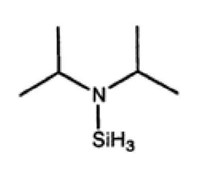Excerpts from the Judgment, and Some Considerations
1. Scope of the Claim (Claim 1)
“Aminosilanes represented by the following formula:”
[Chemical formula 1]

2. Excerpts from the Judgment
(1) Novelty
“… In the field of chemistry, at least, it is sometimes possible to formally provide a chemical formula or a name of a chemical substance, regardless of whether the manufacturing method or other means of obtaining it are known. Therefore, in order for a publication to be considered as disclosing the technical concept of an invention of a chemical substance, in general it is necessary that not only the composition of the chemical substance be disclosed, but also that there be a description to the extent that the manufacturing method and other methods of obtaining the substance can be understood. In addition, if the publication does not contain sufficient information for understanding the manufacturing method or other means of obtaining the product, it is necessary that a person skilled in the art who comes into contact with the relevant publication be able to discover the manufacturing method or another method of obtaining the invention based on the common technical knowledge available at the time of filing the patent application, without having to apply creative ability such as thought or trial and error …
“Although the substance named ‘diisopropylaminosilane’, which corresponds to the chemical formula ‘SiH3[N(C3H7)2]’, is listed in Exhibit 1, no description that would allow anyone to understand the manufacturing method or other means of obtaining said substance is in Exhibit 1.
“Even if the reaction formula could be generalized, it cannot be said that a person skilled in the art would be able to immediately understand the method of synthesizing the compound included in the subordinate concept, or that a person skilled in the art would consider it to be common technical knowledge …”
(2) Inventive Step
“… As discussed above, even though it was known before the priority date that dimethylaminosilane and diethylaminosilane could be manufactured, it was not known that diisopropylaminosilane could be manufactured or obtained, and it cannot be said that, even for a person skilled in the art with ordinary creativity, it was easy to obtain diisopropylaminosilane of Invention 1 before the priority date.”
3. Some Considerations
This judgment denied the eligibility of the cited invention, stating that it could not be implemented without trial and error by a person skilled in the art, even if the substance name corresponding to the chemical formula “SiH3[N(C3H7)2]” were listed in the cited literature (the name “diisopropylaminosilane” listed in Exhibit 1 is generally understood to refer to the aminosilane indicated at the beginning of “Chemical Formula 1” of Invention 1, and there is no dispute between the parties on this point).
In this case, the court ruled that “diisopropylaminosilane” could not be recognized as “an invention described in a publication” under Article 29, Paragraph 1, Item 3 of the Patent Act (the eligibility of the cited invention was denied) on the grounds that although the substance name (the “aminosilane” of the present invention) was mentioned in the cited reference, the substance could not be manufactured or obtained without trial or error by a person skilled in the art; therefore, the disclosure of aminosilane in the cited reference was not recognized.
Because it was difficult to obtain and manufacture the “aminosilane” of the present invention in view of the level of technology at the time of the priority date, novelty was recognized even though the name of the substance was given in the cited documents, and because a person skilled in the art at the time of the priority date could not manufacture the compound, it was also recognized as having inventive step. As in this case, even if a compound of an invention in question is described in a publicly known document, it is always important to bear in mind the possibility of a counter-argument that a person skilled in the art would be unable to obtain or manufacture the compound at the level of the technical skill at the time of the priority date without trial and error.
Writer: Hideki TAKAISHI
Supervising editor: Kazuhiko YOSHIDA
Hideki TAKAISHI
Attorney at Law & Patent Attorney
Nakamura & Partners
Room No. 616, Shin-Tokyo Building,
3-3-1 Marunouchi, Chiyoda-ku,